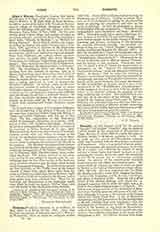

Diego y Moreno, FRANCISCO GARCIA, first bishop of California, b. September 17, 1785, at Lagos in the state of Jalisco, Mexico; d. April 30, 1846, at Santa Barbara. In 1801 he received the habit of St. Francis at the missionary college of Guadalupe, Zacatecas, made his vows the following year and was ordained priest at Monterey, Nuevo Leon, November 13, 1808. For the next twenty years Father Diego was mainly occupied in preaching missions, and during this period compiled a small work, “Metodo de Misionar”, or “Method for Giving Missions”. From 1816 to 1819 he was master of novices, in 1822 he was made discretos, and in February, 1832, guardian or superior of the missionary college of Guadalupe. At the request of the Mexican Government, which had resolved to expel all Spanish friars from California, the college, whose members were natives, in April, 1832, sent eleven Mexican Franciscans to California, Father Diego going as commissary. They reached Cape San Lucas in September, 1832, and Monterey, the headquarters, in February, 1833. The Guadalupan friars took charge of the missions from San Antonio to Sonoma, and on March 6, Father Diego chose Santa Clara for his field of labor. He remained here until the end of 1835, when he visited Mexico to induce the Government to have a bishop appointed, in order to preserve the Church in California. On September 19, 1836, the Mexican Government decided to petition the pope to create California a diocese and congress at the same time decreed to pay the new bishop an annual salary of $6,000 until the diocese should have a sufficient income. Of the three candidates proposed by the metropolitan chapter on June 22, 1839, the Mexican Government, April 6, 1840, recommended Father Francisco Garcia Diego.
On April 27 Pope Gregory XVI withdrew California from the jurisdiction of the Bishop of Sonora, and at the same time appointed Father Diego first Bishop of Upper and Lower California with the see at San Diego. He was consecrated at the Franciscan church of Guadalupe, Zacatecas, on October 4, 1840, and on December 11, 1841, landed at San Diego. Owing to the poverty and insignificance of the place, he removed his residence to Santa Barbara on January 11, 1842. When he arrived, there were only seventeen Franciscan Fathers, mostly aged and infirm, in charge of the twenty-one secularized Indian missions and six Spanish towns. The bishop began with great plans and a sincere desire to promote the welfare of the Church in his territory. The Mexican Government had encouraged him by giving him a fixed salary, and entrusting to him the management of the famous “Pious Fund”, but in February, 1842, President Santa Anna confiscated the Fund. The bishop received no aid what-ever, so that he was obliged to depend upon the contributions from the few white settlers in the territory, many of whom refused to pay the tithes which he had found it necessary to impose. Nevertheless he opened the first seminary on the Pacific coast at the former mission of Santa Inez, about fifteen miles from the ocean and forty-five miles from Santa Barbara, made one visitation of all the churches in the diocese, and to some places even went a second time. Worn out by hardships and disheartened at the deplorable conditions which he could not remedy, Bishop Diego died, and was buried in the old Mission Santa Barbara.
ZEPHRYN ENGELHARDT

